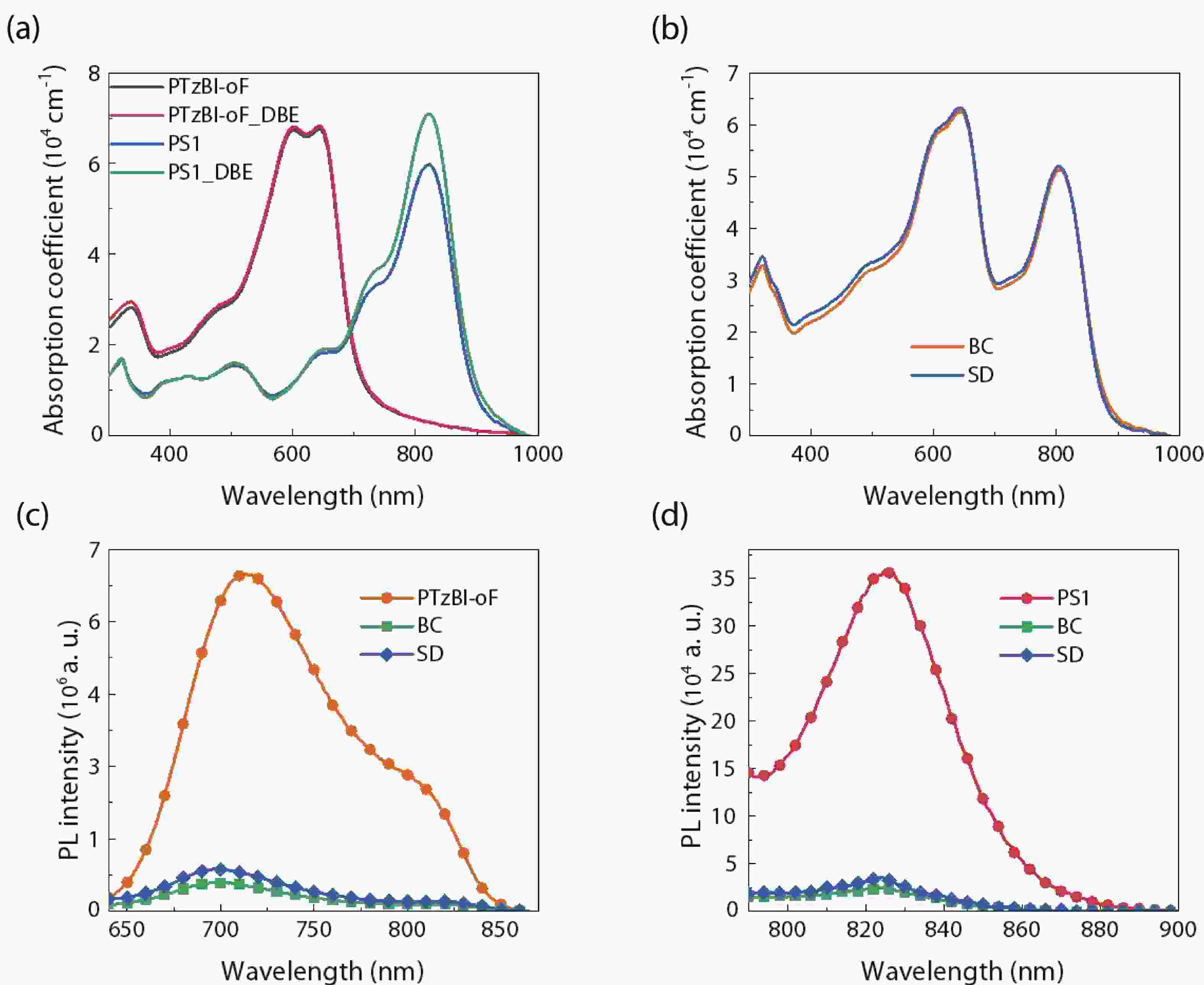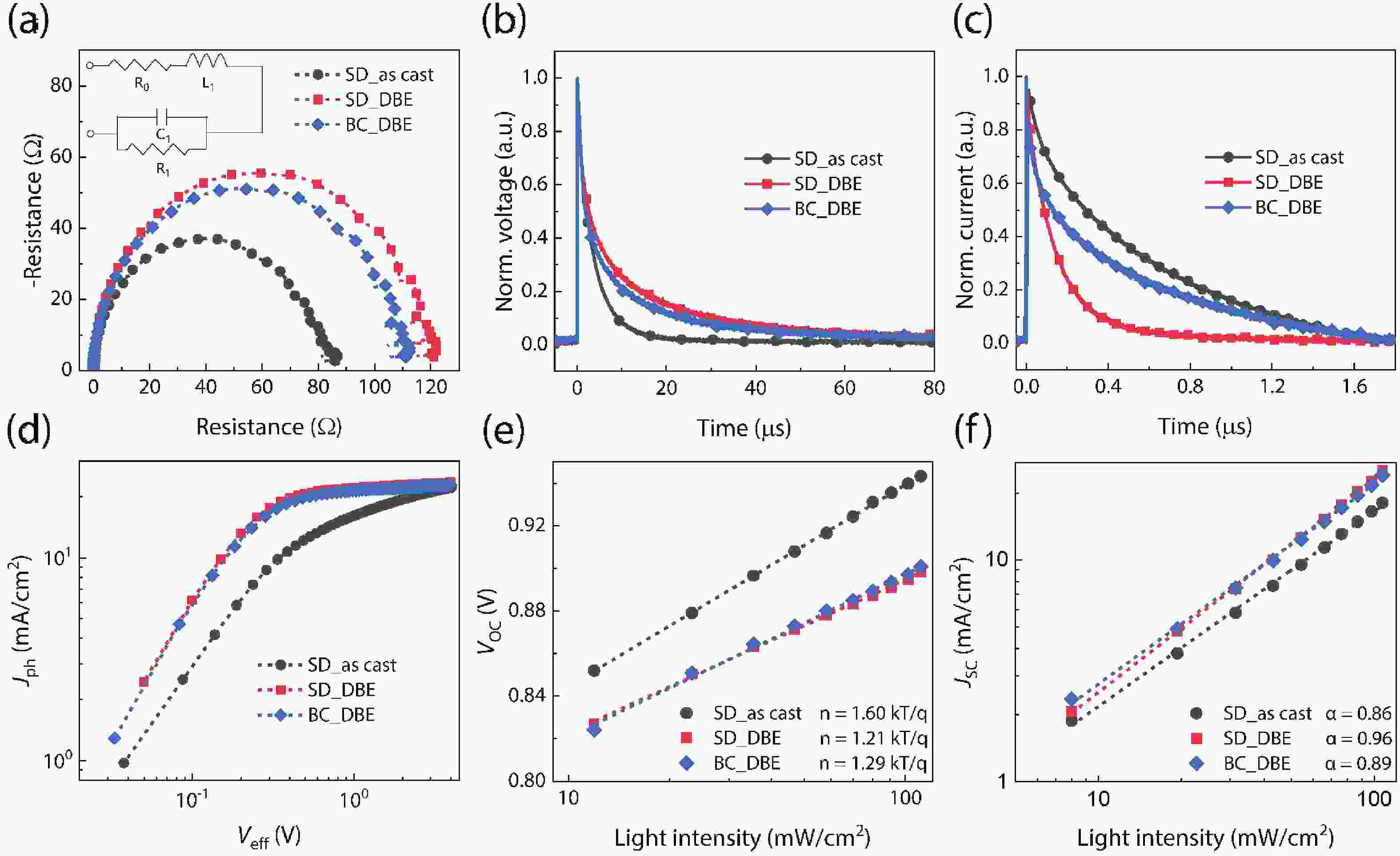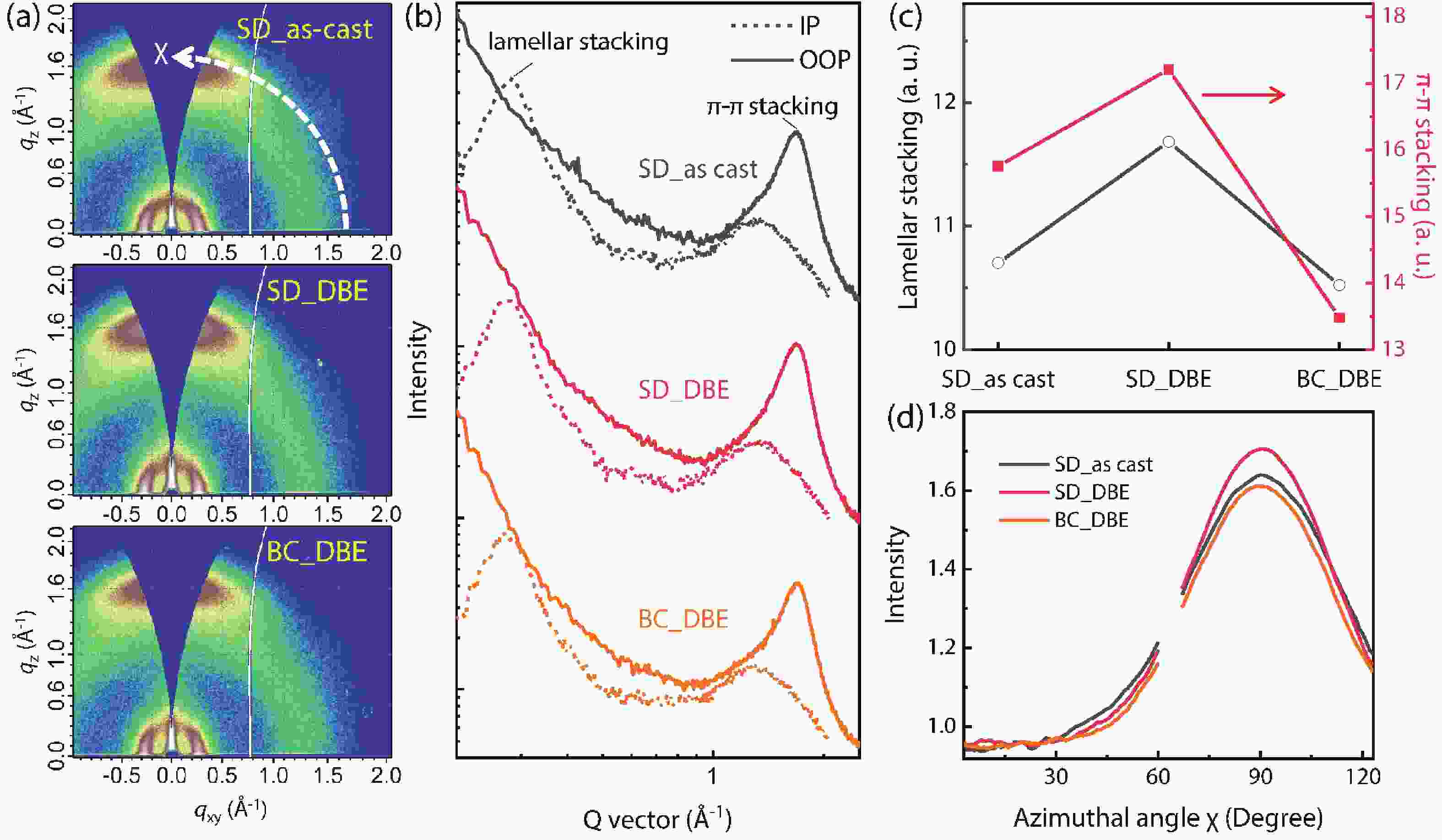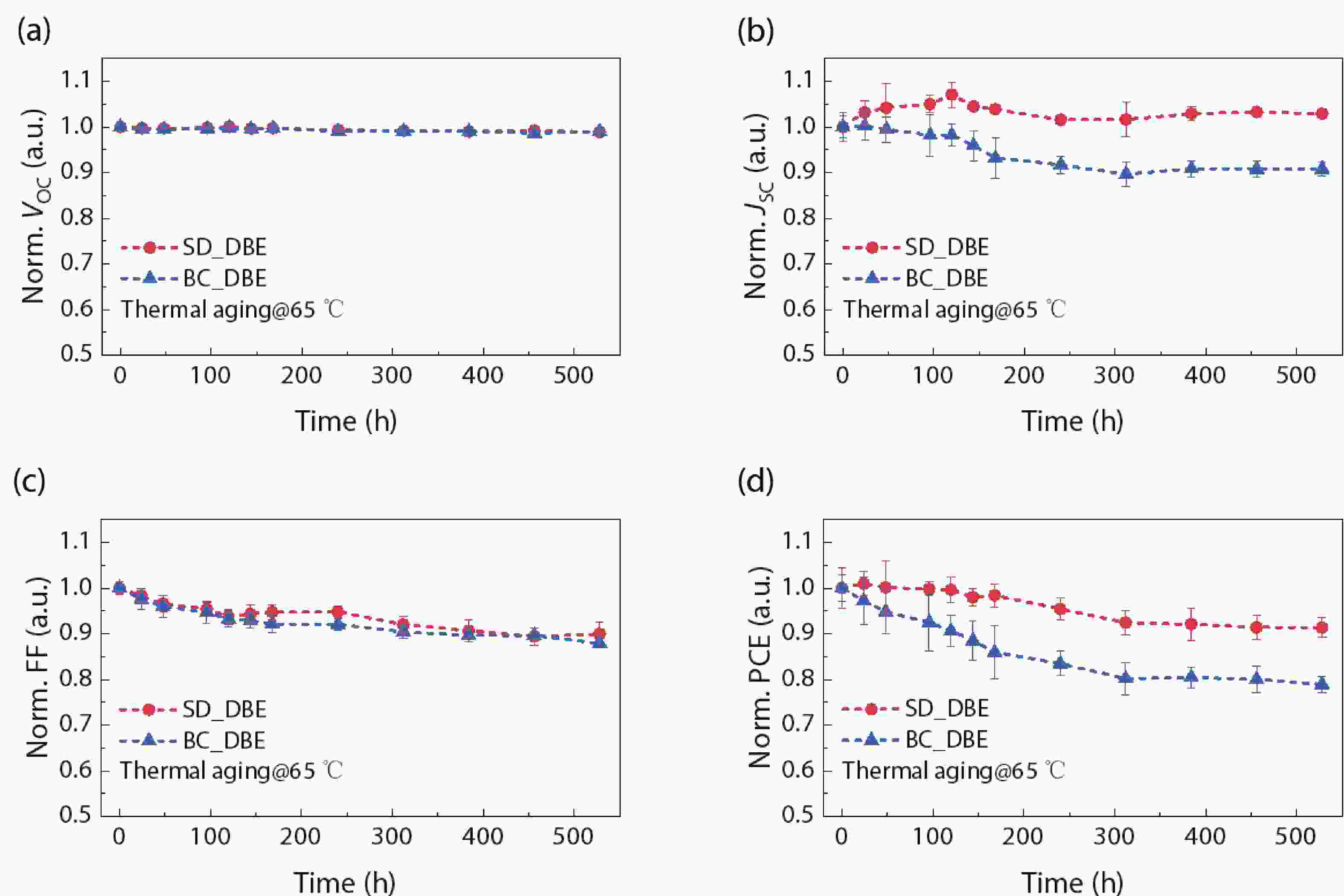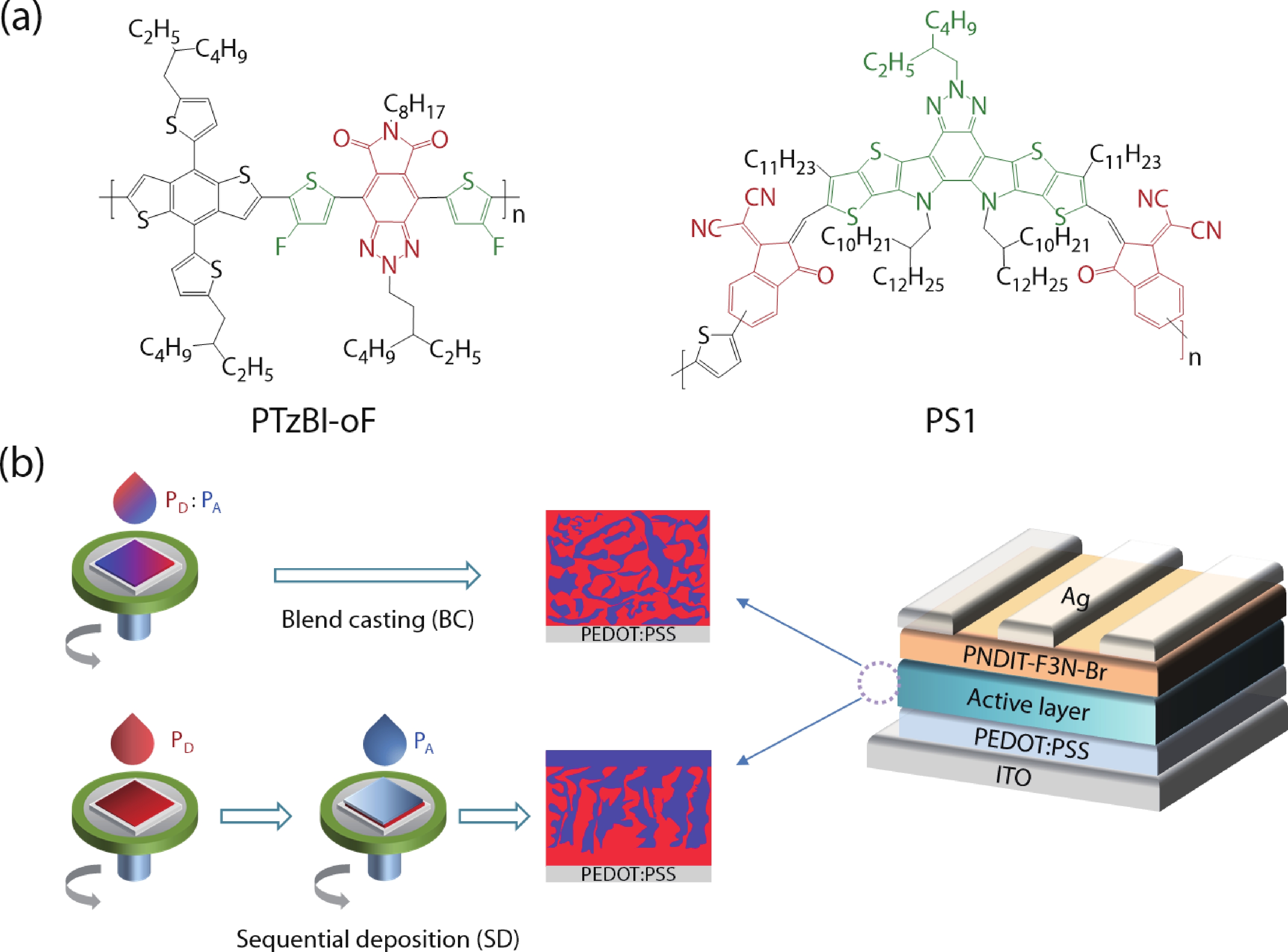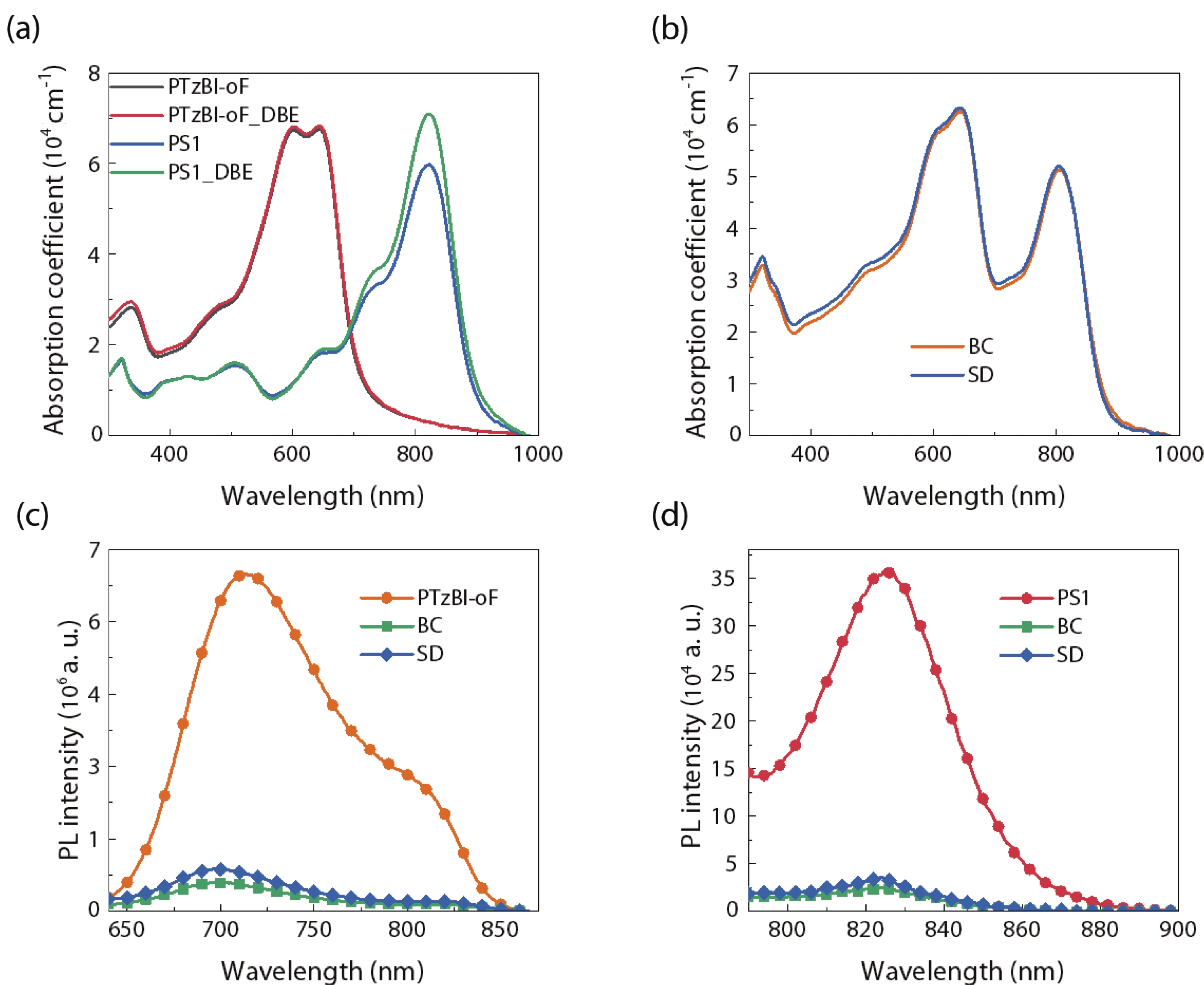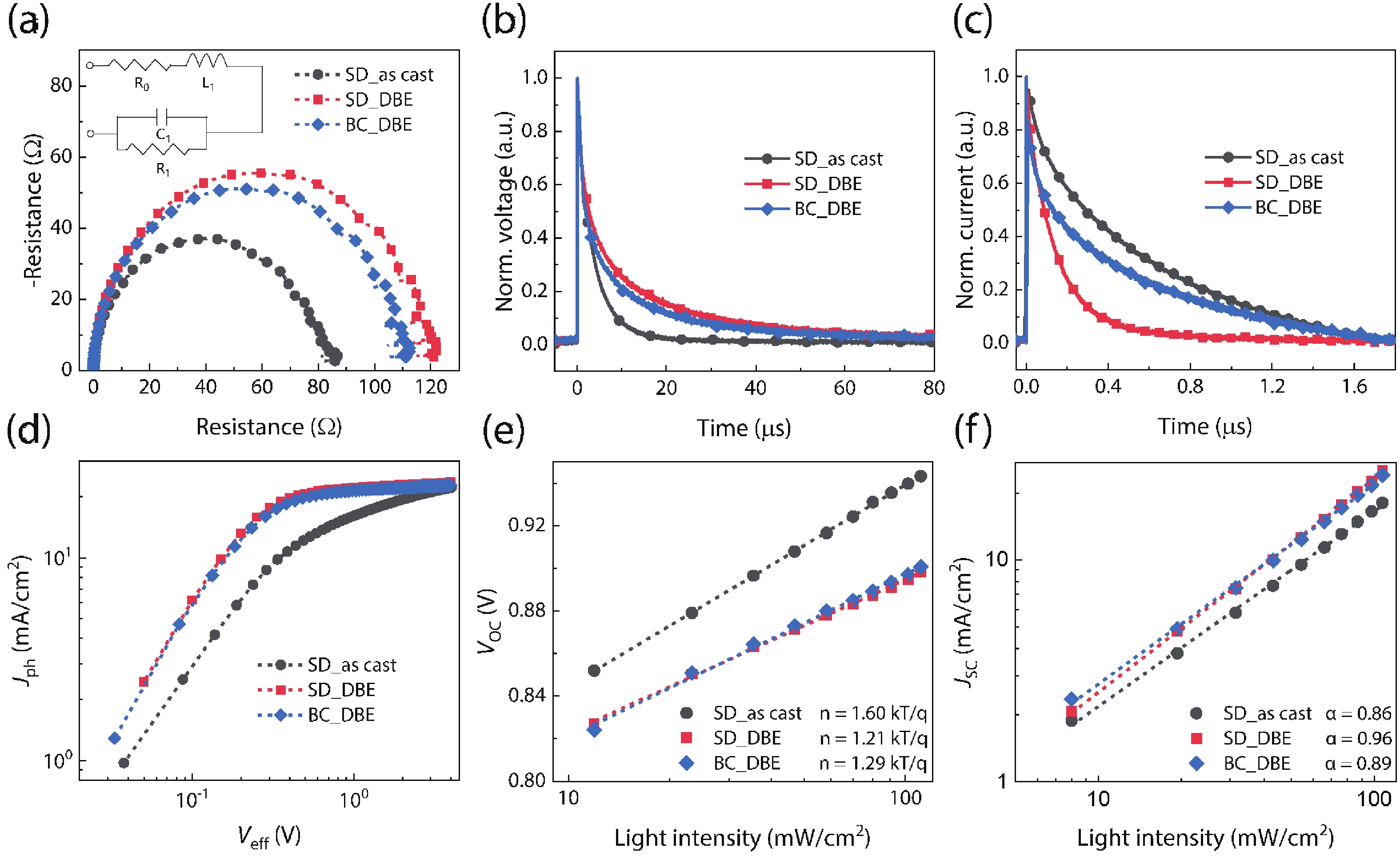| Citation: |
Kang An, Wenkai Zhong, Chunguang Zhu, Feng Peng, Lei Xu, Zhiwei Lin, Lei Wang, Cheng Zhou, Lei Ying, Ning Li, Fei Huang. Optimizing the morphology of all-polymer solar cells for enhanced photovoltaic performance and thermal stability[J]. Journal of Semiconductors, 2023, 44(5): 052201. doi: 10.1088/1674-4926/44/5/052201
K An, W K Zhong, C G Zhu, F Peng, L Xu, Z W Lin, L Wang, C Zhou, L Ying, N Li, F Huang. Optimizing the morphology of all-polymer solar cells for enhanced photovoltaic performance and thermal stability[J]. J. Semicond, 2023, 44(5): 052201. doi: 10.1088/1674-4926/44/5/052201
Export: BibTex EndNote
|
Optimizing the morphology of all-polymer solar cells for enhanced photovoltaic performance and thermal stability
doi: 10.1088/1674-4926/44/5/052201
More Information-
Abstract
Due to the complicated film formation kinetics, morphology control remains a major challenge for the development of efficient and stable all-polymer solar cells (all-PSCs). To overcome this obstacle, the sequential deposition method is used to fabricate the photoactive layers of all-PSCs comprising a polymer donor PTzBI-oF and a polymer acceptor PS1. The film morphology can be manipulated by incorporating amounts of a dibenzyl ether additive into the PS1 layer. Detailed morphology investigations by grazing incidence wide-angle X-ray scattering and a transmission electron microscope reveal that the combination merits of sequential deposition and DBE additive can render favorable crystalline properties as well as phase separation for PTzBI-oF:PS1 blends. Consequently, the optimized all-PSCs delivered an enhanced power conversion efficiency (PCE) of 15.21% along with improved carrier extraction and suppressed charge recombination. More importantly, the optimized all-PSCs remain over 90% of their initial PCEs under continuous thermal stress at 65 °C for over 500 h. This work validates that control over microstructure morphology via a sequential deposition process is a promising strategy for fabricating highly efficient and stable all-PSCs. -
References
[1] Zhang Z, Li Y. Polymerized small-molecule acceptors for high-performance all-polymer solar cells. Angew Chem Int Edit, 2021, 60, 4422 doi: 10.1002/anie.202009666[2] Kang H, Lee W, Oh J, et al. From fullerene-polymer to all-polymer solar cells: the importance of molecular packing, orientation, and morphology control. Acc Chem Res, 2016, 49, 2424 doi: 10.1021/acs.accounts.6b00347[3] Zhang D, Fan B, Ying L, et al. Recent progress in thick‐film organic photovoltaic devices: materials, devices, and processing. SusMat, 2021, 1, 4 doi: 10.1002/sus2.10[4] Zhou N, Facchetti A. Naphthalenediimide (ndi) polymers for all-polymer photovoltaics. Mater Today, 2018, 21, 377 doi: 10.1016/j.mattod.2018.02.003[5] Sun H, Yu H, Shi Y, et al. A narrow-bandgap n-type polymer with an acceptor-acceptor backbone enabling efficient all-polymer solar cells. Adv Mater, 2020, 32, 2004183 doi: 10.1002/adma.202004183[6] Ji X, Xiao Z, Sun H, et al. Polymer acceptors for all-polymer solar cells. J Semicond, 2021, 42, 080202 doi: 10.1088/1674-4926/42/8/080202[7] Shi Y, Ding L. N-type acceptor–acceptor polymer semiconductors. J Semicond, 2021, 42, 100202 doi: 10.1088/1674-4926/42/10/100202[8] Wu B, Yin B, Duan C, et al. All-polymer solar cells. J Semicond, 2021, 42, 080301 doi: 10.1088/1674-4926/42/8/080301[9] Fan Q, Xiao Z, Wang E, et al. Polymer acceptors based on y6 derivatives for all-polymer solar cells. Sci Bull, 2021, 66, 1950 doi: 10.1016/j.scib.2021.07.002[10] Duan C, Ding L. The new era for organic solar cells: Polymer acceptors. Sci Bull, 2020, 65, 1508 doi: 10.1016/j.scib.2020.05.023[11] Kong Y, Li Y, Yuan J, et al. Polymerizing small molecular acceptors for efficient all-polymer solar cells. InfoMat, 2022, 4, e12271 doi: 10.1002/inf2.12271[12] Jia B, Wang J, Wu Y, et al. Enhancing the performance of a fused-ring electron acceptor by unidirectional extension. J Am Chem Soc, 2019, 141, 19023 doi: 10.1021/jacs.9b08988[13] Fan Q, Fu H, Wu Q, et al. Multi-selenophene-containing narrow bandgap polymer acceptors for all-polymer solar cells with over 15% efficiency and high reproducibility. Angew Chem Int Edit, 2021, 60, 15935 doi: 10.1002/anie.202101577[14] Dai S, Li T, Wang W, et al. Enhancing the performance of polymer solar cells via core engineering of nir-absorbing electron acceptors. Adv Mater, 2018, 30, 1706571 doi: 10.1002/adma.201706571[15] Yu Z P, Liu Z X, Chen F X, et al. Simple non-fused electron acceptors for efficient and stable organic solar cells. Nat Commun, 2019, 10, 2152 doi: 10.1038/s41467-019-10098-z[16] Fan Q, Ma R, Liu T, et al. High-performance all-polymer solar cells enabled by a novel low bandgap non-fully conjugated polymer acceptor. Sci China Chem, 2021, 64, 1380 doi: 10.1007/s11426-021-1020-7[17] Song J, Li Y, Cai Y, et al. Solid additive engineering enables high-efficiency and eco-friendly all-polymer solar cells. Matter, 2022, 5, 4047 doi: 10.1016/j.matt.2022.08.011[18] Cai Y, Xie C, Li Q, et al. Improved molecular ordering in a ternary blend enables all-polymer solar cells over 18% efficiency. Adv Mater, 2022, 2208165 doi: 10.1002/adma.202208165[19] An K, Peng F, Zhong W, et al. Improving photovoltaic parameters of all-polymer solar cells through integrating two polymeric donors. Sci China Chem, 2021, 64, 2010 doi: 10.1007/s11426-021-1078-5[20] Li Z, Ying L, Zhu P, et al. A generic green solvent concept boosting the power conversion efficiency of all-polymer solar cells to 11%. Energy Environ Sci, 2019, 12, 157 doi: 10.1039/C8EE02863J[21] Xu X, Li Z, Wang J, et al. High-performance all-polymer solar cells based on fluorinated naphthalene diimide acceptor polymers with fine-tuned crystallinity and enhanced dielectric constants. Nano Energy, 2018, 45, 368 doi: 10.1016/j.nanoen.2018.01.012[22] Sun R, Wang W, Yu H, et al. Achieving over 17% efficiency of ternary all-polymer solar cells with two well-compatible polymer acceptors. Joule, 2021, 5, 1548 doi: 10.1016/j.joule.2021.04.007[23] Zhang X, Yao N, Wang R, et al. On the understanding of energy loss and device fill factor trade-offs in non-fullerene organic solar cells with varied energy levels. Nano Energy, 2020, 75, 105032 doi: 10.1016/j.nanoen.2020.105032[24] Ye L, Cai Y, Li C, et al. Ferrocene as a highly volatile solid additive in non-fullerene organic solar cells with enhanced photovoltaic performance. Energy Environ Sci, 2020, 13, 5117 doi: 10.1039/D0EE02426K[25] Zhao F, Wang C, Zhan X. Morphology control in organic solar cells. Adv Energy Mater, 2018, 8, 1703147 doi: 10.1002/aenm.201703147[26] Qin Y, Xu Y, Peng Z, et al. Low temperature aggregation transitions in N3 and Y6 acceptors enable double-annealing method that yields hierarchical morphology and superior efficiency in nonfullerene organic solar cells. Adv Funct Mater, 2020, 30, 2005011 doi: 10.1002/adfm.202005011[27] Zhong W, Hu Q, Jiang Y, et al. In situ structure characterization in slot-die-printed all-polymer solar cells with efficiency over 9%. Solar RRL, 2019, 3, 1900032 doi: 10.1002/solr.201900032[28] Weng K, Ye L, Zhu L, et al. Optimized active layer morphology toward efficient and polymer batch insensitive organic solar cells. Nat Commun, 2020, 11, 2855 doi: 10.1038/s41467-020-16621-x[29] Xu Y, Yuan J, Liang S, et al. Simultaneously improved efficiency and stability in all-polymer solar cells by a p–i–n architecture. ACS Energy Lett, 2019, 4, 2277 doi: 10.1021/acsenergylett.9b01459[30] Zhang D, Zhong W, Ying L, et al. Overcoming incompatibility of donors and acceptors by constructing planar heterojunction organic solar cells. Nano Energy, 2021, 85, 105957 doi: 10.1016/j.nanoen.2021.105957[31] Wang Y, Zhan X. Layer-by-layer processed organic solar cells. Adv Energy Mater, 2016, 6, 1600414 doi: 10.1002/aenm.201600414[32] Peng F, An K, Zhong W, et al. A universal fluorinated polymer acceptor enables all-polymer solar cells with >15% efficiency. ACS Energy Lett, 2020, 5, 3702 doi: 10.1021/acsenergylett.0c02053[33] Zhu C, Li Z, Zhong W, et al. Constructing a new polymer acceptor enabled non-halogenated solvent-processed all-polymer solar cell with an efficiency of 13.8%. Chem Commun, 2021, 57, 935 doi: 10.1039/D0CC07213C[34] Yuan J, Zhang Y, Zhou L, et al. Single-junction organic solar cell with over 15% efficiency using fused-ring acceptor with electron-deficient core. Joule, 2019, 3, 1140 doi: 10.1016/j.joule.2019.01.004[35] Li Q, Wang L M, Liu S, et al. Vertical composition distribution and crystallinity regulations enable high-performance polymer solar cells with >17% efficiency. ACS Energy Lett, 2020, 5, 3637 doi: 10.1021/acsenergylett.0c01927[36] Wu Z, Sun C, Dong S, et al. N-type water/alcohol-soluble naphthalene diimide-based conjugated polymers for high-performance polymer solar cells. J Am Chem Soc, 2016, 138, 2004 doi: 10.1021/jacs.5b12664[37] Proctor CM, Kuik M, Nguyen T Q. Charge carrier recombination in organic solar cells. Prog Polym Sci, 2013, 38, 1941 doi: 10.1016/j.progpolymsci.2013.08.008[38] Garcia-Belmonte G, Boix P P, Bisquert J, et al. Simultaneous determination of carrier lifetime and electron density-of-states in P3HT: PCBM organic solar cells under illumination by impedance spectroscopy. Sol Energy Mater Sol Cells, 2010, 94, 366 doi: 10.1016/j.solmat.2009.10.015[39] Li Z, Gao F, Greenham NC, et al. Comparison of the operation of polymer/fullerene, polymer/polymer, and polymer/nanocrystal solar cells: A transient photocurrent and photovoltage study. Adv Funct Mater, 2011, 21, 1419 doi: 10.1002/adfm.201002154[40] Koster L J A, Mihailetchi V D, Blom PWM. Bimolecular recombination in polymer/fullerene bulk heterojunction solar cells. Appl Phys Lett, 2006, 88, 052104 doi: 10.1063/1.2170424[41] Etzold F, Howard IA, Mauer R, et al. Ultrafast exciton dissociation followed by nongeminate charge recombination in PCDTBT: PCBM photovoltaic blends. J Am Chem Soc, 2011, 133, 9469 doi: 10.1021/ja201837e[42] Zhong W, Hu Q, Ying L, et al. Manipulating film morphology of all-polymer solar cells by incorporating polymer compatibilizer. Solar RRL, 2020, 4, 2000148 doi: 10.1002/solr.202000148[43] Du X, Guo J, Min J, et al. Stability of organic solar cells: From fullerene derivatives to non-fullerene acceptors. In: Organic Solar Cells: Materials Design, Technology and Commercialization, 2022, 613 doi: 10.1002/9783527833658.ch17[44] Du X, Heumueller T, Gruber W, et al. Unraveling the microstructure-related device stability for polymer solar cells based on nonfullerene small-molecular acceptors. Adv Mater, 2020, 32, 1908305 doi: 10.1002/adma.201908305[45] Du X, Heumueller T, Gruber W, et al. Efficient polymer solar cells based on non-fullerene acceptors with potential device lifetime approaching 10 years. Joule, 2019, 3, 215 doi: 10.1016/j.joule.2018.09.001 -
Supplements
 22120004suppl.pdf
22120004suppl.pdf

-
Proportional views

§Kang An, Wenkai Zhong, and Chunguang Zhu contributed equally to this work.




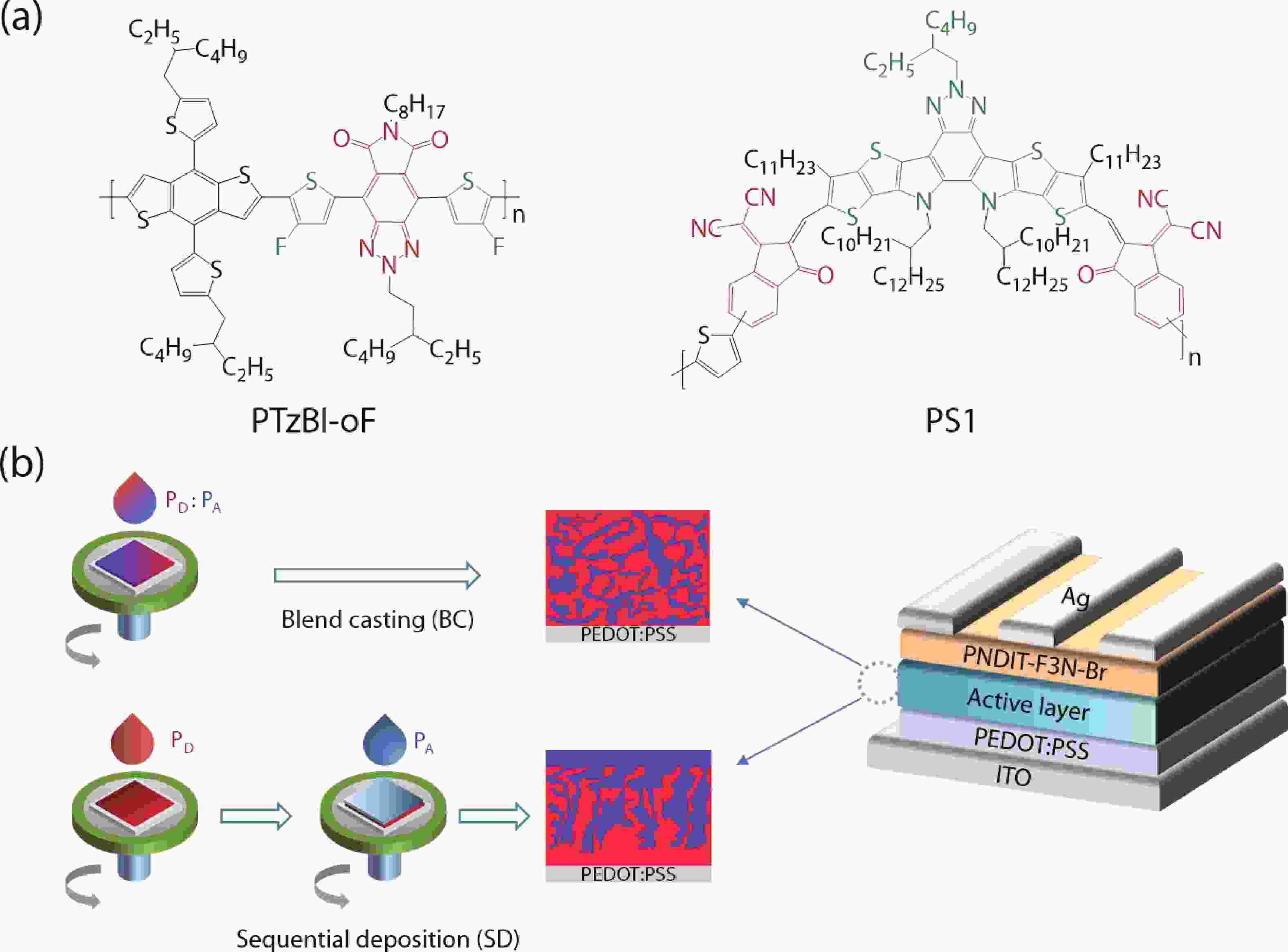
 DownLoad:
DownLoad:
